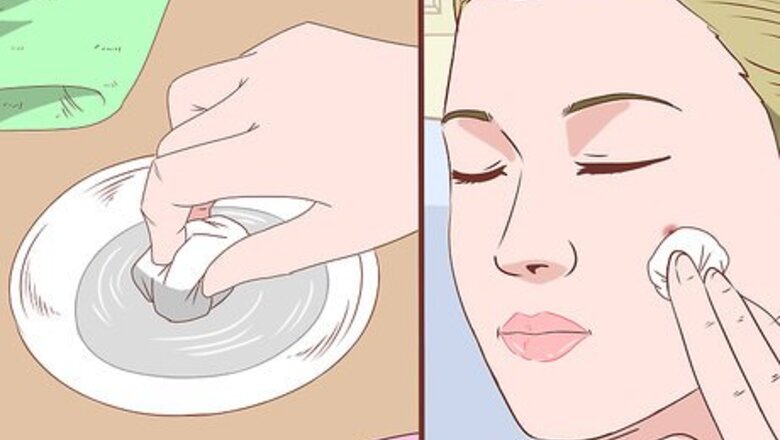
views
Stopping the Bleeding

Apply hydrogen peroxide and direct pressure to encourage the blood to clot. Soak a clean tissue or washcloth in hydrogen peroxide, then apply gentle but firm pressure to the bleeding zit. The pressure will encourage the blood to form a clot, while the hydrogen peroxide will kill any bacteria coming out of the zit. This will prevent your acne outbreak from spreading to the surrounding skin. Note that hydrogen peroxide can dry out your skin, so make sure to moisturize once the bleeding has stopped.
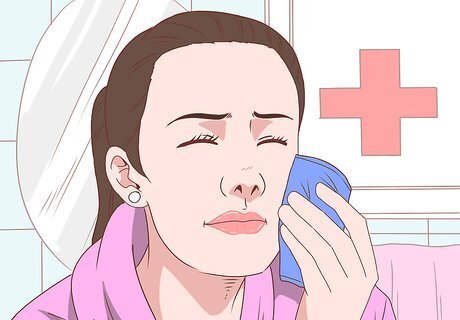
Use an ice pack. Cold decreases blood flow to an area (whereas applying heat increases blood flow). If direct pressure alone does not stem the bleeding, try applying pressure with an ice pack. Place ice in a clean towel or washcloth and hold it to the bleeding source for 10 to 15 minutes, or until the bleeding stops. Make sure the towel is clean to avoid the risk of introducing bacteria into your broken skin.
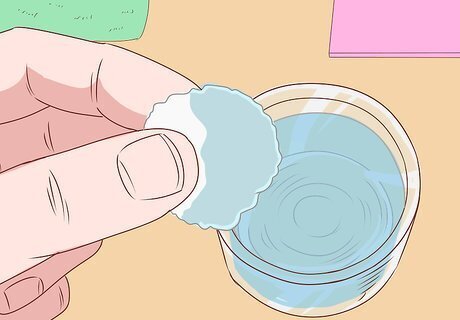
Treat the bleeding with an astringent. Astringents like skin toner or witch hazel can be used both to tighten skin and to slow down bleeding. If you don’t have an astringent skin product around the house, you can use vinegar from your pantry. Soak a cotton swab or clean washcloth in the astringent and press it firmly against the blood source. With enough time, it should shrink the blood vessels and stop the flow of blood.
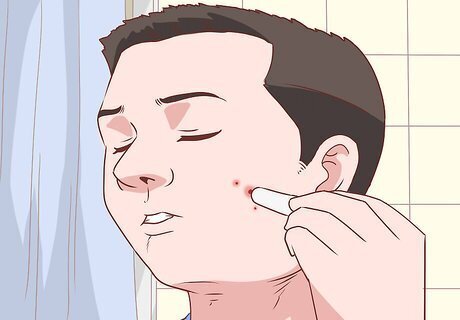
Use a styptic pencil to stop stubborn bleeding. Styptic pencils are antiseptic tools that are used to stop bleeding from small scrapes and cuts quickly and cleanly. They coat the area with alum or silver nitrate, stemming blood flow almost immediately. The waxy material also creates a thin barrier over the damaged skin, protecting it from bacteria and infection. You can buy a styptic pencil at the pharmacy or online. Wet the styptic pencil, and apply it with gentle pressure to the zit until it stops bleeding.
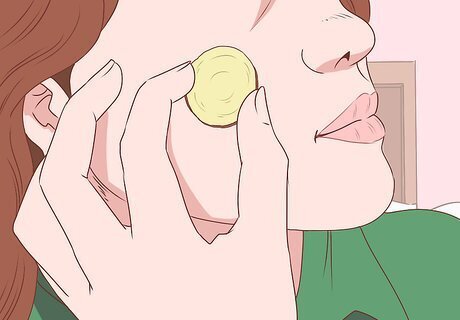
Press a potato slice against the bleeding source. Research has shown that potatoes are a fast and effective way to stop bleeding from small cuts and scrapes. The starch soaks up water and blood plasma, and encourages the blood to clot quickly.
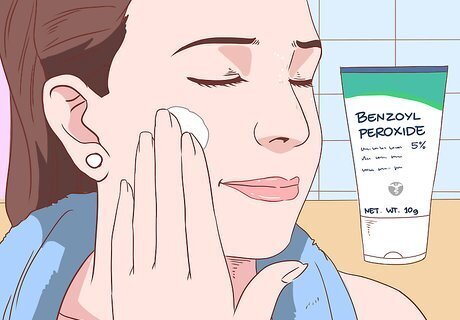
Apply benzoyl peroxide to both clear up the zit and stop bleeding. Soak a cotton swab or tissue with benzoyl peroxide and apply direct pressure to the pimple. It will both encourage the bleeding to stop and attack the bacteria that causes zits in the first place. This will help prevent the spread of your outbreak to the rest of your skin. Benzoyl peroxide can dry the skin out slightly, so be sure to apply moisturizer after washing it off.
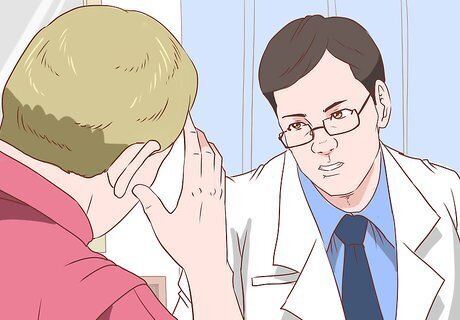
Visit your doctor if the bleeding doesn't stop. Bleeding from a minor source, such as a zit, should stop within one to nine minutes. If a minor wound bleeds more than that, it might indicate anemia or another blood clotting disease. Your doctor will be able to diagnose and address any underlying health problems that might contribute to your bleeding.
Treating the Pimple Once Bleeding Has Stopped
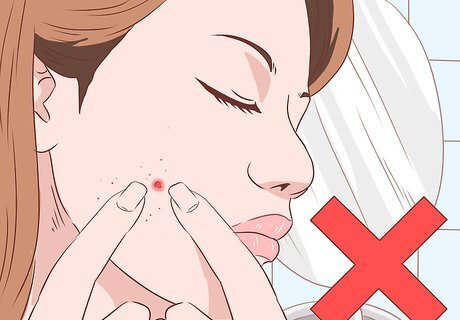
Resist the urge to pop your pimples. It’s tempting to just get the offending pus out of your skin, but you should leave pimple popping to medical experts using professional tools. When you pop a pimple, the bacteria that oozes out can get into the pores in the surrounding skin, actually spreading acne to otherwise healthy skin. You might also cause more bleeding, which is never a good thing! A pimple should run its course within three to seven days, so just medicate it with topical treatments and wait it out. Think about it this way: you probably want to get rid of the zit because you don't like the way it looks. But a zit is temporary. Popping it can cause scarring — and you probably won't like the way that looks, either, but the difference is the scarring is permanent. It's better to just wait out the pimple and allow it to clear up rather than risk permanently marring your skin.
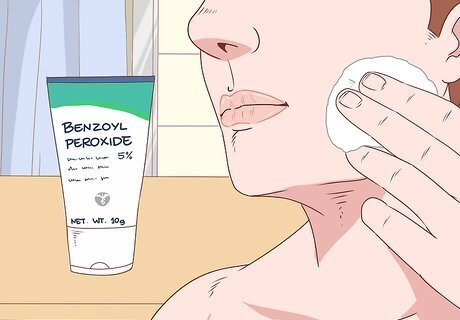
Continue using benzoyl peroxide. Most acne treatments on the market make use of it, so you can find it in a wide variety of styles. Depending on your preference, you can use benzoyl peroxide as a lotion, gel, cleanser, cream, or face wash. It kills off the bacteria that causes acne outbreaks and removes excess oil and dead skin cells from the surface of the skin. Be careful not to get it on your clothing, as it can discolor dyed cloth.
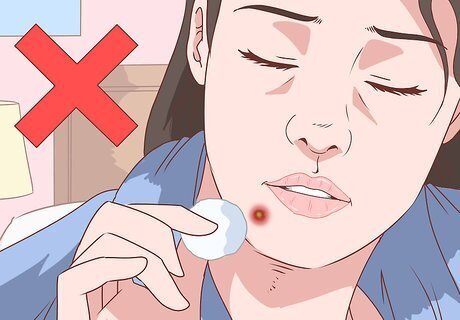
Try applying salicylic acid to your skin. The products on the market that contain salicylic acid come in a wide variety of strengths, so look at the packaging to determine which product will be best for you. Like benzoyl peroxide, it comes in a variety of application styles: medicated wipes or pads, creams, gels, cleansers and face washes, and even shampoos. Salicylic acid can cause skin irritation when you first start using it, so apply a small amount for a few days. You can gradually increase your usage as your skin adjusts to the product. These products tend to dry out the skin. Make sure you moisturize regularly, and decrease your usage if the dryness gets out of hand. Don’t use products with salicylic acid if you have any open or broken pimples on your face.
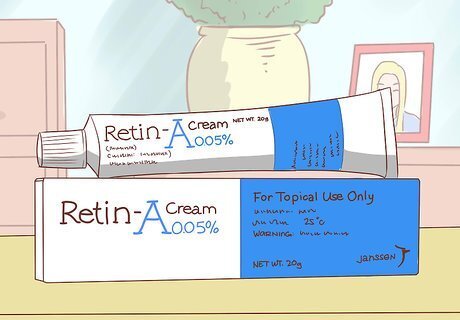
Try Retin-A (tretinoin). This is a topical cream that must be prescribed by your doctor or dermatologist. Wash your hands before and after applying Retin-A, then wash your face with a gentle cleanser. Wait about 20 to 30 minutes, then apply the cream — if your skin is not try, the Retin-A may irritate it. Apply a thin layer to the acne lesions before bedtime or in the evening. Avoid the eyes, ears, and mouth. Retin-A can make your skin sensitive to sunlight, so make sure you limit exposure and wear sunscreen and protective clothing if you go outside. Never apply to sunburned skin. Consult your doctor if you are planning on getting pregnant.
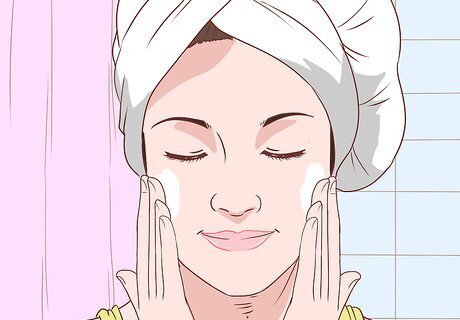
Be gentle when washing your face. Many people mistakenly think that scrubbing at their skin will help clean and treat the skin more quickly. In fact, vigorous scrubbing usually makes acne worse. It irritates the skin, and can weaken its natural defenses against bacteria and infection. Choose a gentle cleanser like Cetaphil or Noxzema. These soaps will help keep the skin moist and clean. The best way to massage to soap into the skin for cleaning is with you hands and fingers. Make sure you wash your hands before applying the soap.

Use products as directed. If a product tells you to use it twice daily, don’t assume that using it four times a day will be twice as effective. In fact, the opposite might be true: by upsetting the balance of your skin, you can cause redness, dryness, and irritation that keeps your skin unhealthy and uncomfortable. Don’t give up on treatment too quickly! Many treatments take a long time to have a positive effect on unhealthy skin, so follow the instructions and be patient. Experts recommend waiting at least six to12 weeks before deciding a treatment doesn’t work for you.
















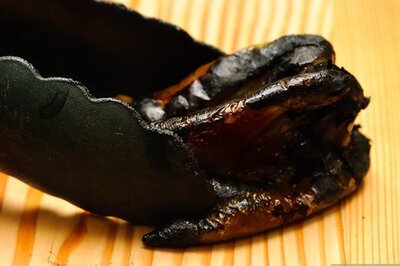

Comments
0 comment